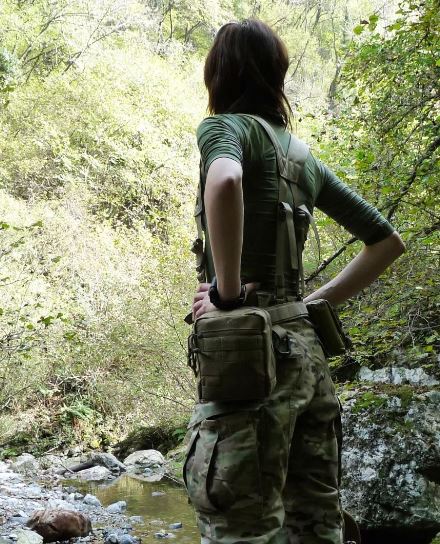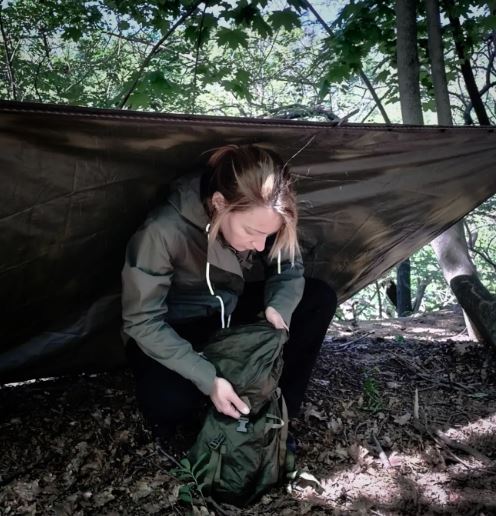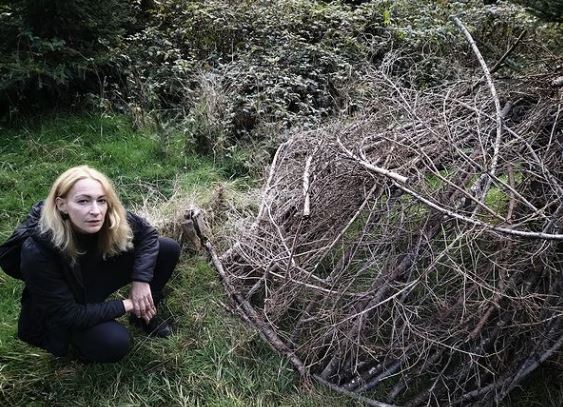Mishaps can happen anywhere, anytime. As outdoor lovers, we are deeply aware of that. Awareness is the first step in dealing with hardships in life. Without having specific consciousness of that, we lack common sense.
This is even more the case when we’re outdoor enthusiasts: hikers, climbers, hunters, tracker, you name it. No matter what activity we’re involved in, mishaps can be just around the corner for a multitude reasons.
The purpose of this article is not to concern you over the possibility of spending a night in the outdoors, but to provide you knowledge of the basic items to manage the situation in the best way possible.
If it is going to happen
Building an emergency shelter in the great outdoors is an extreme solution to an extreme condition.
It could be due to multiple reasons:
- Finding yourself with no reference points – especially with dense fog or in an unfamiliar place
- Being stranded after a fall, or for a severe dehydration, etc.
- Finding yourself without an accurate map of the area
- Running out of batteries for your cell phone, GPS, ..
- Finding yourself without signal
The bullets mentioned above are out of ordinary, but they are more than a remote possibility when you spend regular time in the great outdoors. There are plenty of incidents of this happening to people.
Having the proper gear is the first step, but being prepared is essential too! Mastering survival and bushcraft skills can literally save your life, if you know how, why and where putting them to use.
If you’ve taken any courses, refreshing your abilities should be part of your regular routine in the woods. It’s all about “doing your homework”, as I learned from Dave Canterbury from Pathfinder School.
Starting a fire, gathering the right tinder, setting a tarp, purifying water and so on, are the very core of any survival activity you may need to rely on one day.
Practicing them on a regular basis provides you more self confidence and, in the very same way, it hones your craftsmanship and elevates your skills to the next level.
No more simulations: real mishaps will be tougher than you may expect, especially if you are experiencing physical and mental fatigue, thirst, hunger, lack of sleep and so on.
Risk analysis
In the unfortunate situation of finding yourself stranded, you need to know what to do and how to do it. Common sense should always pave the way in order to fix the situation.

Everything starts with a correct risk analysis, related to:
- The awareness about your performances, starting from an honest analysis of your body – and mind strength and athleticism
- An assessment of food and water supplies you need to carry with you
- Weather conditions and temperatures range
- The type of activity you are going to face
- The area you will be in
A lot of disasters can be avoided with a correct plan. Without a proper assessment, any minor hardship could rapidly turn into a traumatic event. Therefore, accuracy and foresight should be your best companions in the important phase of setting up your backpack.
What to carry in your backpack to make a natural shelter
The gear we carry in our backpack always makes a substantial difference. Don’t overrate some items just because you never had the chance to use them: every piece of our equipment should be in the backpack because it has one (or even more!) purposes. By saying that, you need very common tools to set an improvised shelter, in the unfortunate event your tarp is gone.

Simple objects, such as few yards of paracord and a Swiss army knife can be indispensable in an emergency situation.
As we will soon cover, we can replace them with some creativity and craftsmanship. “Use what you have” should be our motto. You can see that in the pictures.
Good gear, well maintained and tested, is a bonus. But skills, knowledge and perseverance are what mark the success of our actions.
Why make a natural shelter
Sleeping outside means exposure to threats:
- The risk of being injured by dead widow trees
- The presence of night predators
- The risk of hypothermia
- The presence of insects
A natural shelter not only offers a more comfortable way to spend the night, but it also protects us from the elements, and from animals, while giving us ta sense of not being completely helpless.
In few words, it give us protection, hope and warmth. In a survival situation, this means a lot for your morale.
Where to make a natural shelter
As already stressed, your decisions and actions should be lead by common sense and knowledge. Stay away from flash flood areas, natural depressions and humid spots.
Employ your tracking skills to look for a location free of animal tracks. Caves, for example, can be the den of predators. Find a place looking to south, preferably with a natural coverage offered by boulders or fallen trees. As you can see from the photos, I opted to take advantage from erratic boulders, or I simply went for a open area with no risk of falling trees.
Also look for natural resources. Being close to a stream can provide you a supply of water to filter, and a wooded area offers you not only material for your fire, but also branches to use to set up your natural shelter.
Be careful grabbing resources from a medium/long distance. If you do so, you’ll be exhausted. You should look for what you need in your immediate area.
How to make a natural shelter
Once you’ve selected the best spot, you better start to thinking about how to set up your shelter considering your weight, height and gear you have. Be careful not to make it too big or too small. It should contain you and your backpack without being too cramped.
Start to work on it when you have daylight and don’t rush yourself in creating a shelter. You don’t need a long-term shelter immediately. You need something that really works for you and your situation, weather conditions, remaining daylight hours, temperature and, last but not least, your level of fatigue.
Building a shelter will cost you a lot in terms of energy and, therefore, calories.
Use what you have
“Start where you are, use what you have, do what you can”
As illustrated in the pictures, a solid emergency shelter must look towards the south, and take advantage of the elements already existing in the area, in order to make your work as easy as possible.
A large boulder, for example, extremely common throughout quite all mountaineer areas, can serve as an ideal wall.
I opted out to create a lean-to improvised shelter taking advantage of this large, rock wall.
Fallen pine trees provided me the proper coverage for the opposite side of the shelter, as they are pretty straight and help achieve your goal of staying warm by keeping them close to each other.
Setting a natural shelter step by step
“Improvisation means coming to the situation without rigid expectations or preconceptions. The key to improvisation is motion — you keep going forward, fearful or not, living from moment to moment. That’s how life is.”
– Bobby McFerrin
Once I cleared the surrounding area of debris, I started using my knife, but you can just use your hands too by always wearing gloves, and splitting them into the ideal size using your knees to create a sort of rack of straight branches, put side by side in order to leave no empty spaces. In this manner you will get the wall done.
I also covered one end with other branches, in order to set up a barrier, and to avoid the dispersion of heat.

At the opposite end, calculating the space needed to access my shelter, I set up a deflector (held together by several turns of paracord) that allowed me to make the most of the heat, and the benefit from making, and maintaining a fire.
Furthermore, you can also create an improvised mattress made of fallen leaves and soft debris. Having a roomy thrash bag will help you to easily collect them.
Ultimately, I cover the shelter with moss and few ferns (to avoid spoors intoxication). In other occasions, as you can see, I went for dead leaves (chestnuts and beeches).
Conclusion
“The most useful virtues, for one who walked on, were flexibility and a willingness to improvise.”
– Rachel Hartman
Improvise, adapt and overcome is what a tough situation always requires you to do. A natural shelter isn’t supposed to be the best long term solution. Never let yourself down by the absence of a tent or of a tarp. Your skills, your attitude and your tenacity will allow you to achieve success when it comes not only to spend the night out, but also to save your life.
Kyt Lyn Walken
- Certified Wildlife Conservation Ranger at Conservation Ranger Operations Worldwide
- Official Representative & Instructor at Hull’s Tracking School
- Directora de Rastreo Humano por Dynamic Tracking (Spain)
- The way of Tracking – European Mantracking School
